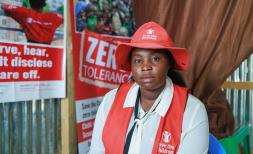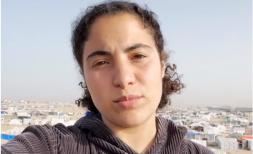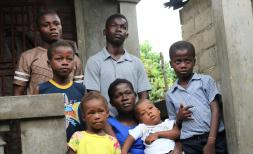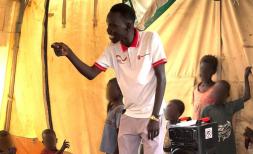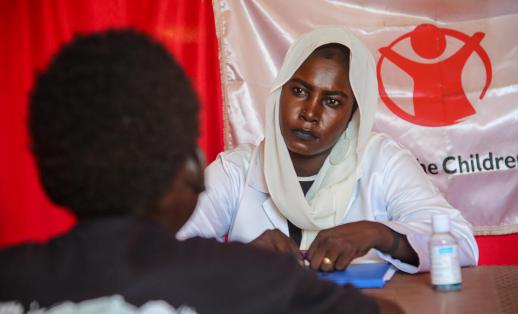Over 100 co-sponsors joined our UN resolution to eliminate child, early and forced marriage!
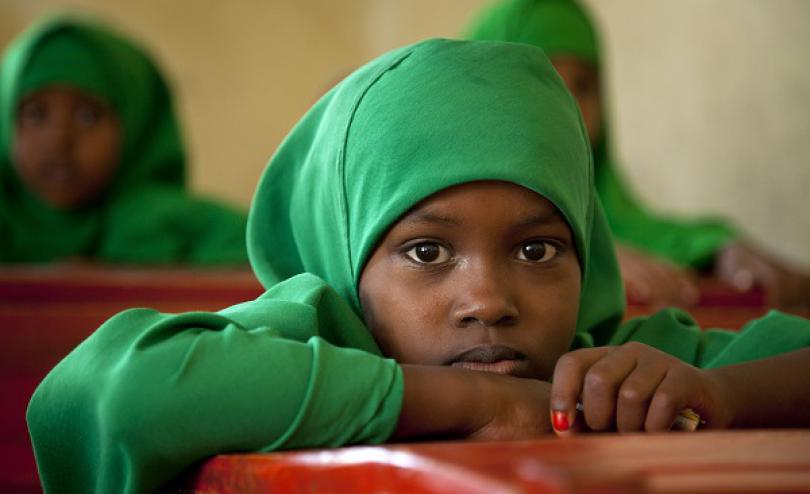
On 17th November the UN General Assembly adopted a Resolution on Child Early and Forced Marriage (CEFM) this is a notable win in our global and national efforts to end child marriage by 2030. The Resolution was co-led by Zambia and Canada, two continued champions in the effort to end child marriage. It also received the sponsorship of over 100 countries, and amongst these sponsors are Mexico and Tanzania. Save the Children country offices in each of these countries played a key advocacy role in getting the resolution sponsored, and below our colleagues Freya Seath (our Advocacy Advisor at our UN liaison office New York), Ivonne Peidras (our Campaign Lead in Mexico) and Jasminka Milovanovic (our Senior Advocacy and Campaign Manager in Tanzania) lay out the process for their engagement and the potential impact of the Resolution.

To Freya: Tell us how Save the Children got involved with this advocacy effort? And what was our role in it?
Save the Children has been an active member of the New York based CEFM Civil Society (CSO) Working Group, co-chaired by Plan International and International Women’s Health Coalition (IWHC), since June 2016. This group coordinated CSO recommendations and advocacy towards the CEFM Resolution that was adopted on 22 November.
Advocacy with UN Missions over the past 6 months has been a combined effort amongst the CSO Working Group members. What’s significant here is that feedback received from many UN Missions has been that they were greatly appreciative that instead of being lobbied by a number of different organisations, they had instead one main ‘go to’ CSO group that shared consolidated messaging and recommendations towards the Resolution text language. In particular, Save the Children provided strong substantive recommendations and focus in the CSO Working Group on CEFM and the impact on girls education, CEFM in fragile states and refugee camps, and the importance of recognizing the need to ensure fair financing for girls.
In June and July 2016, the CSO Working Group shared initial CEFM priorities and recommendations with the UN Missions of Canada and Zambia – the Resolution co-chairs.

To Jasminka: In Tanzania, you have a strong campaigning focus on ending child marriage. What are the steps you took to ensure your government co-sponsored the resolution?
In the week leading up to the Resolution being tabled, we got in touch with the Honourable Minister Ummy Mwalimu (Ministry of Health, Community Development, Gender, Elderly and Children) explaining why co-sponsoring the UN Resolution is so important for the country. We highlighted that Tanzania co-sponsored the Resolution in 2014 and would be good to do the same this year. It was especially timely when we bear in in mind all those efforts of Save the Children and other members of Tanzania Ending Child Marriage Network on amending existing Tanzanian legislation to end child marriage.
But I strongly feel the main reason the Government took this important step is in our ongoing work on the National Plan of Action on Violence Against Children and Women. We are championing child protection and ending child marriage across the country, and especially in the regions with high child marriage prevalence rates. Our recipe for winning is continuous and timely communication with the decision makers and building recognition and trust.

To Ivonne: How did you use your influencing powers to get the Mexican government to co-sponsor?
In the past years we have built a good relationship with the Ministry of Foreign Affairs (MoFa) which is the entity in charge of all foreign policy. As soon as we knew of the resolution, we decided to send an official letter to MoFa, Claudia Ruiz Massieu and also to the key people involved in this issue. As soon as we sent the letter, we arranged a call with Dr. Erasmo Lara, who is a strategic person in MoFa, his department is the one that decides if Mexico subscribes or not resolutions in UN.
The Mexican delegation was already participating in the drafting group of the Resolution, but its participation was poor, at least publicly. However, we used the opportunity to explain to our Government contacts the strategic importance of signing the resolution – particularly with the upcoming Supreme court case deliberating the legal age of marriage, and whether it should be legal for minors as young as 14 to marry!

To Freya: From the perspective of our campaign for girls, what has this resolution achieved for us as an organisation and what do you see as a follow-up action?
The adoption of this Resolution provides an important global mandate for our campaign to end child marriage. There is an opportunity to hold Governments who support this Resolution accountable to the commitments that have been made in our national level advocacy and campaigning work going forward. Issues raised that reinforce our campaign objectives include a need to tackle key drivers- especially poverty and lack of economic opportunities, the promotion and protection of the rights of women and girls to have equal access to education, greater attention to child marriage in humanitarian settings and enforcement of existing laws and policies that already exist.

